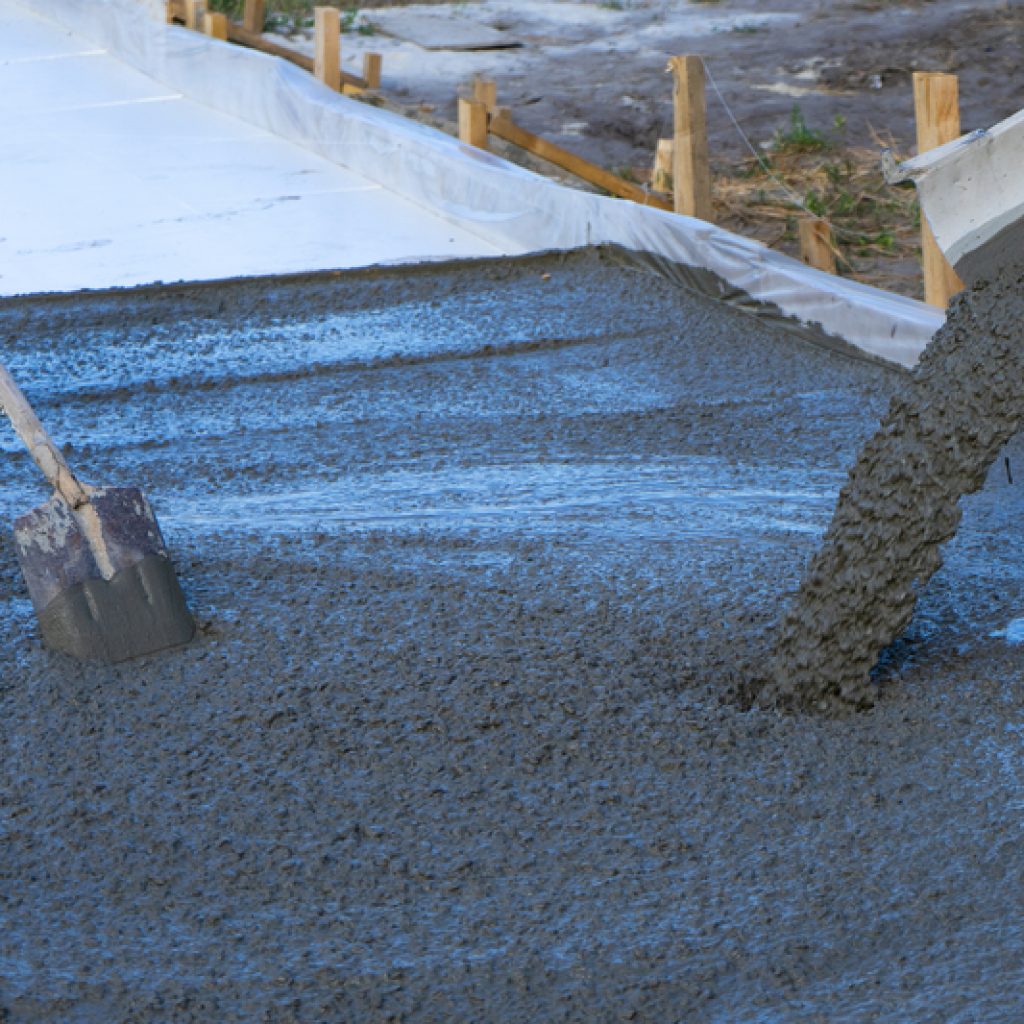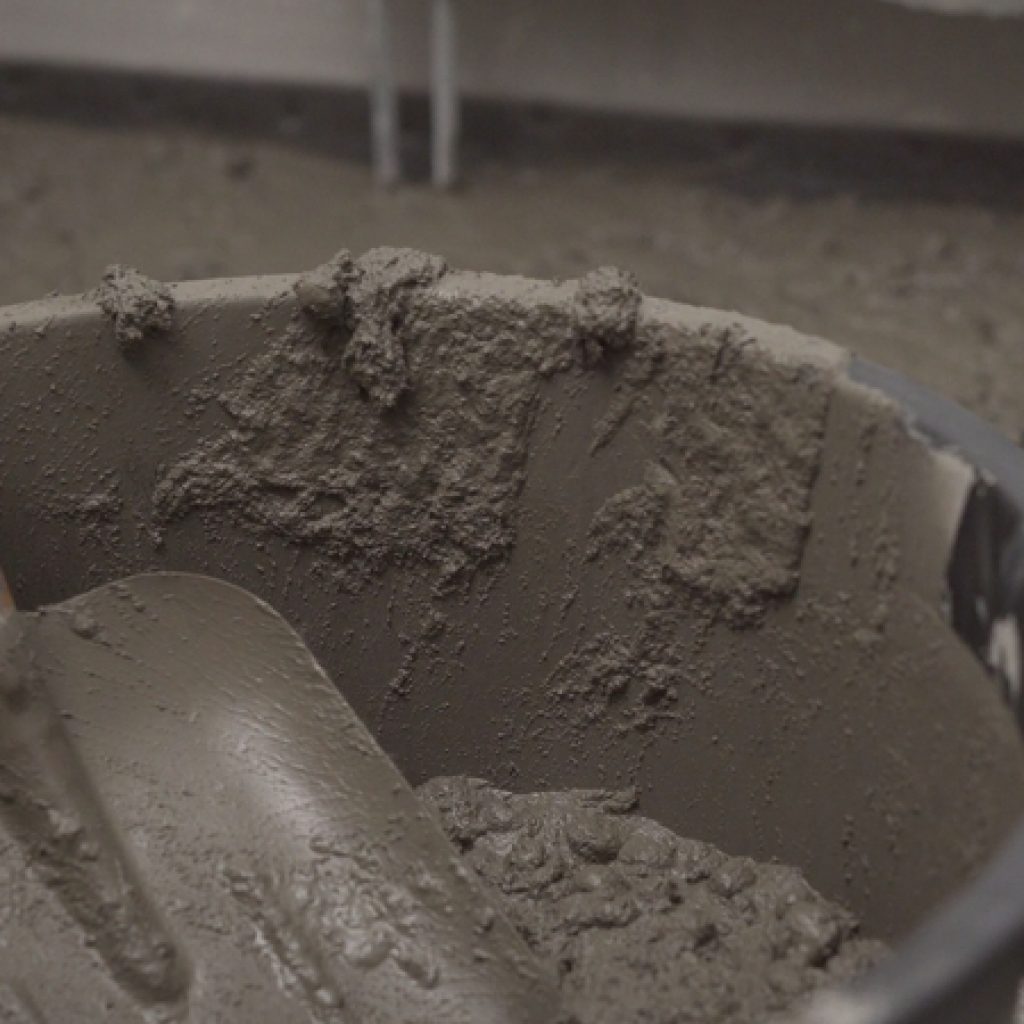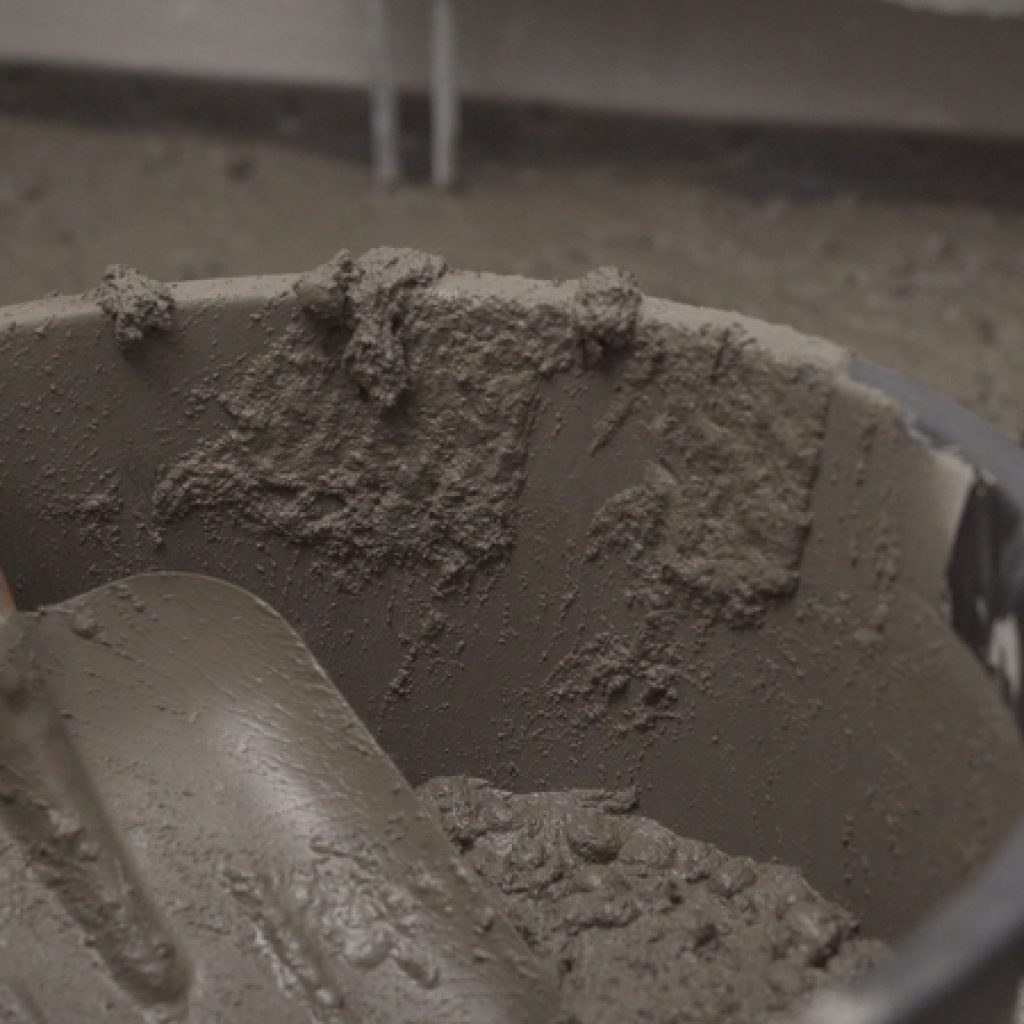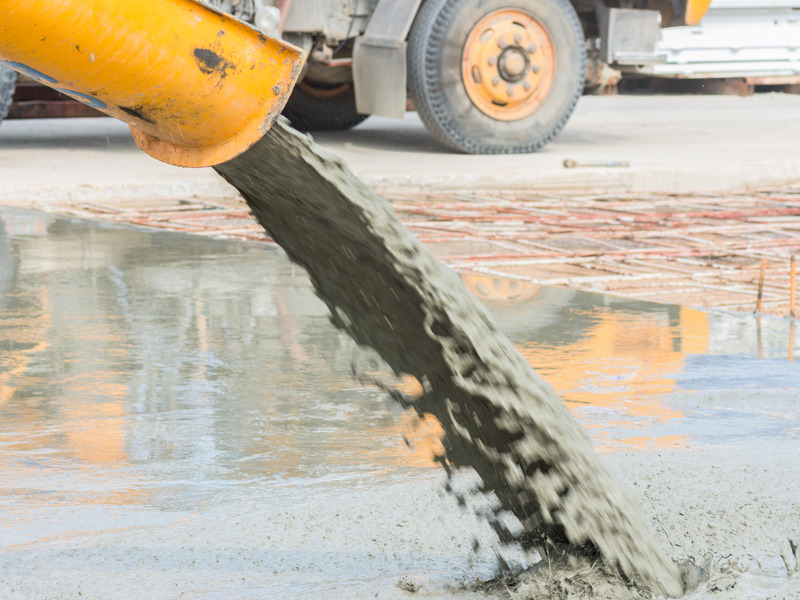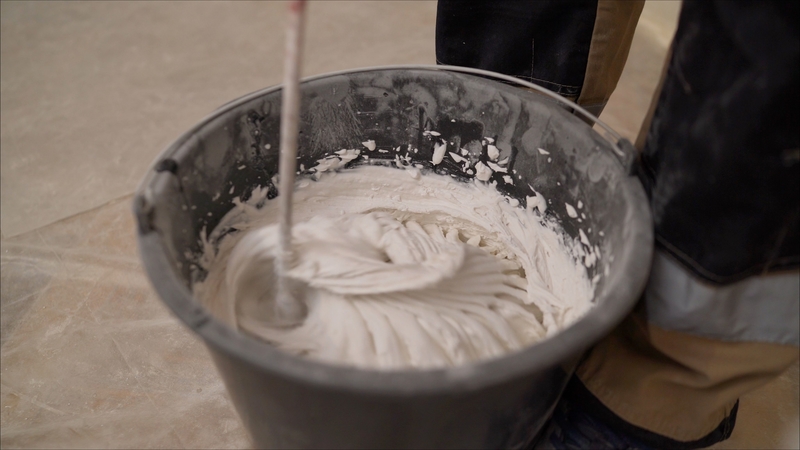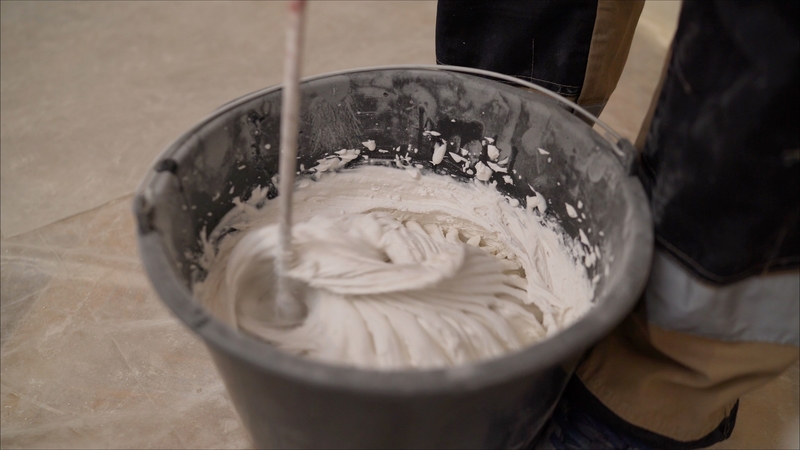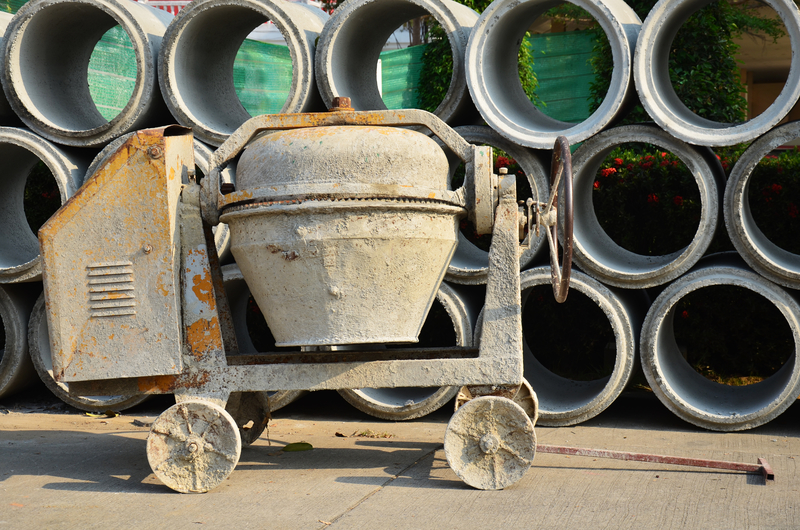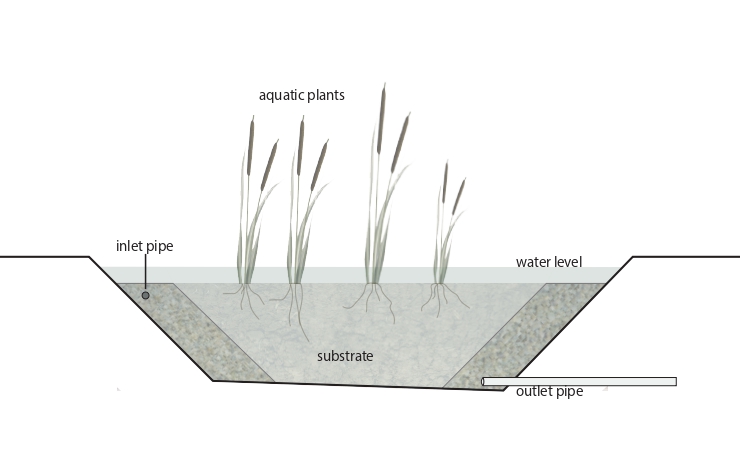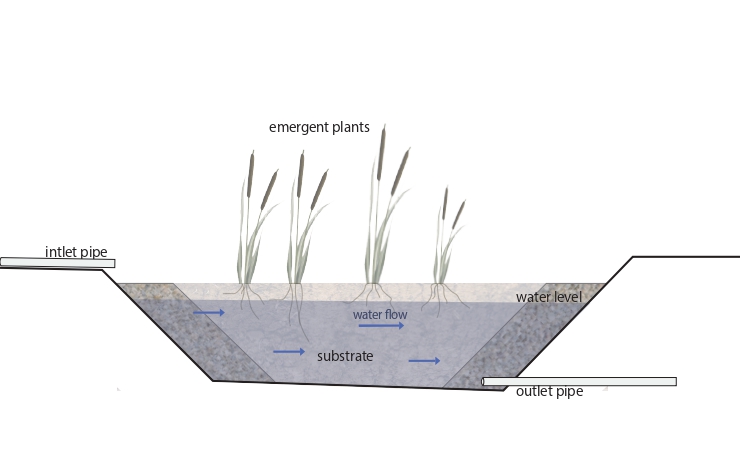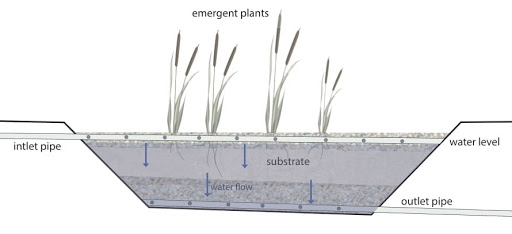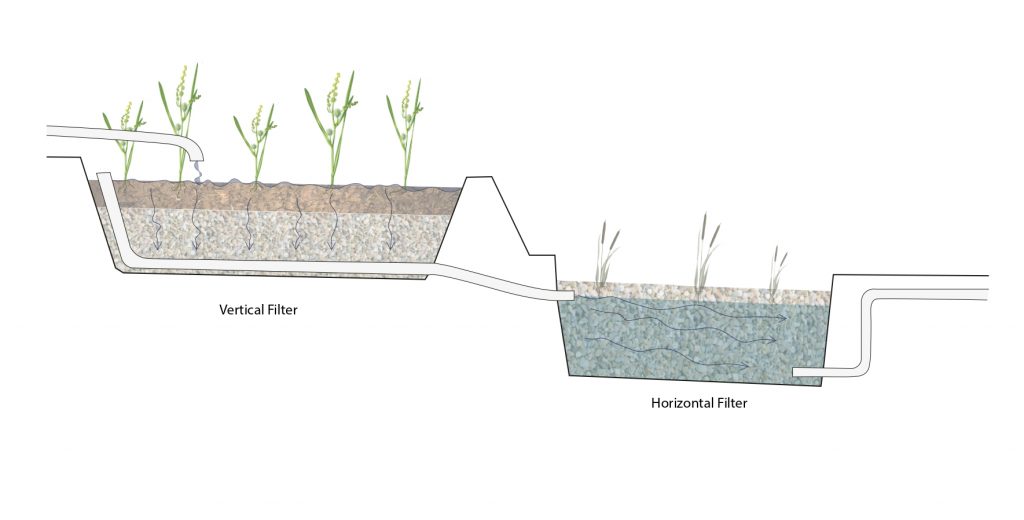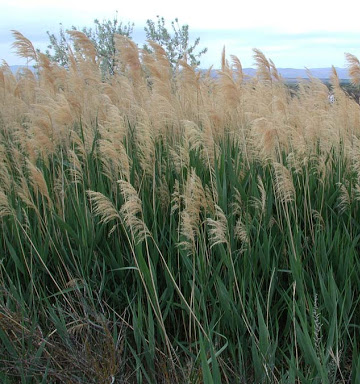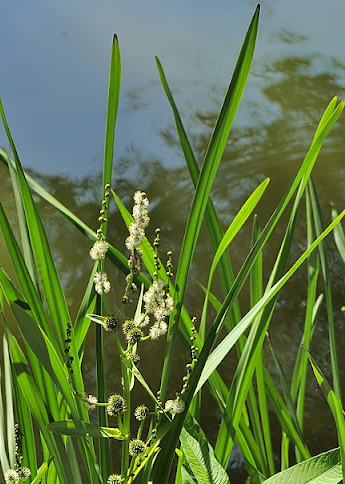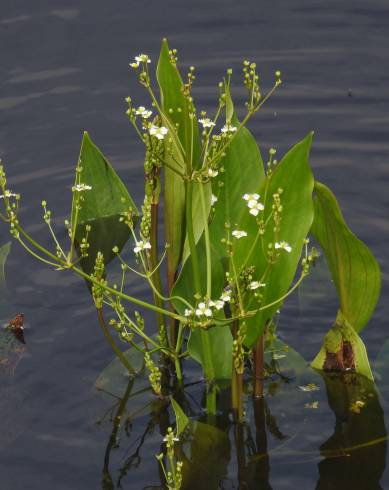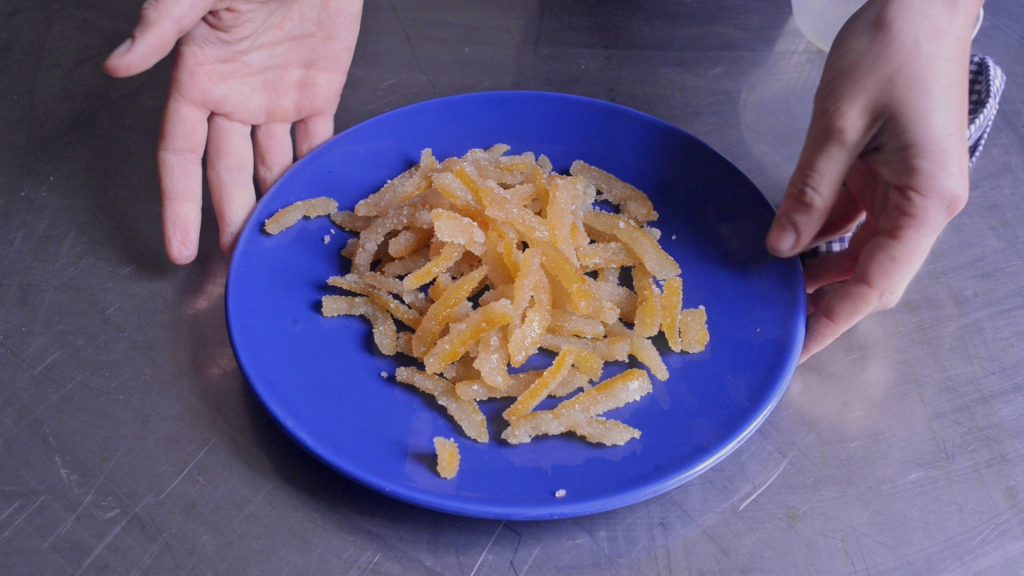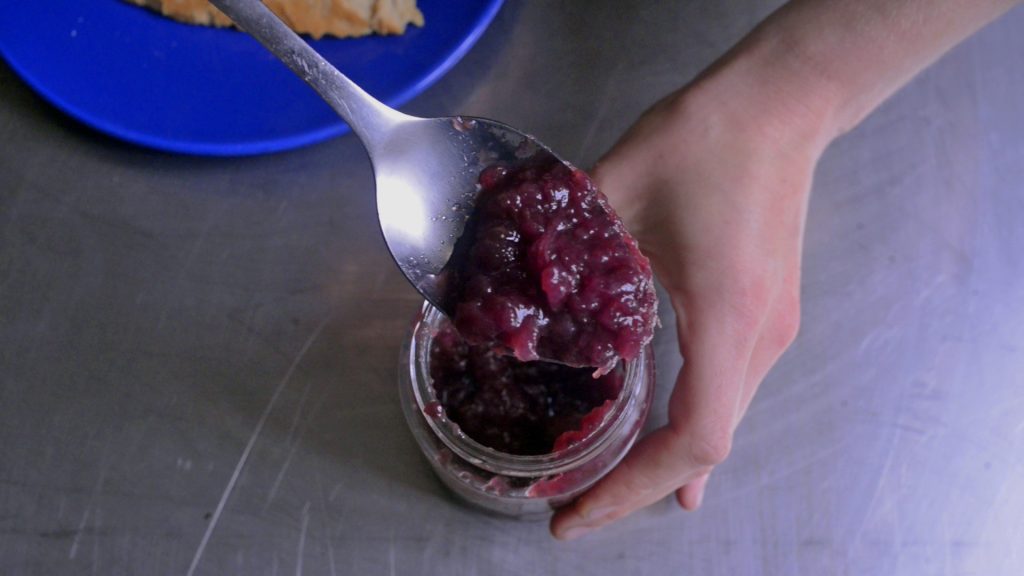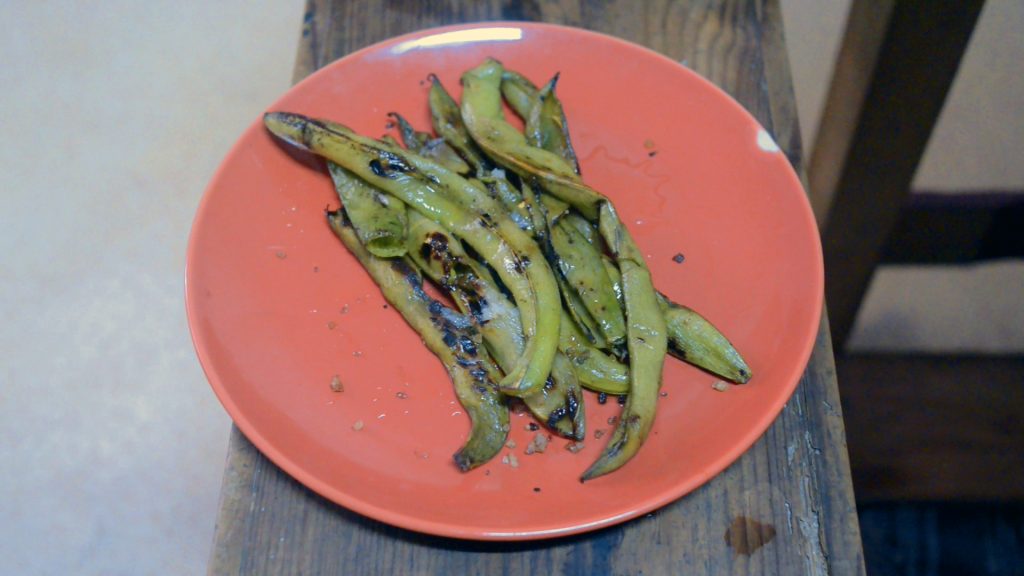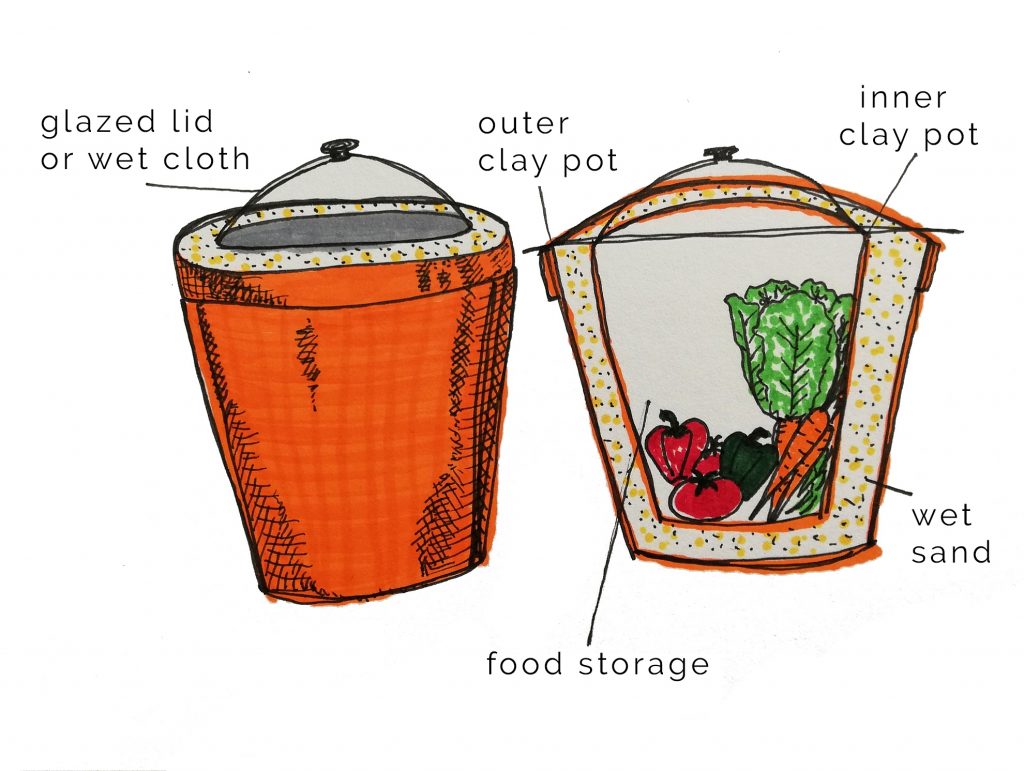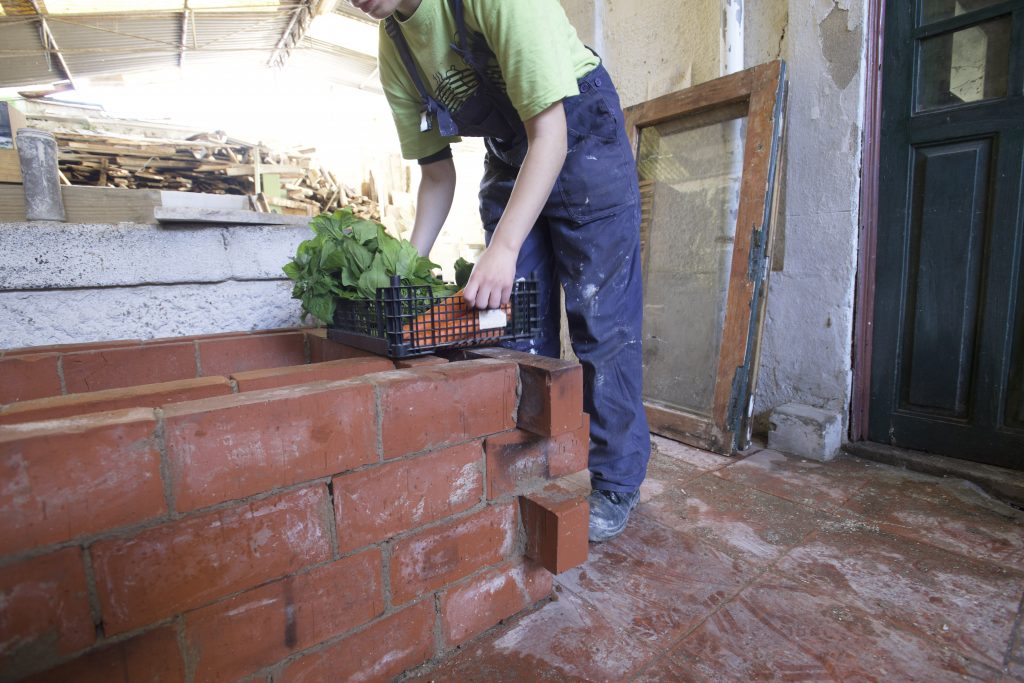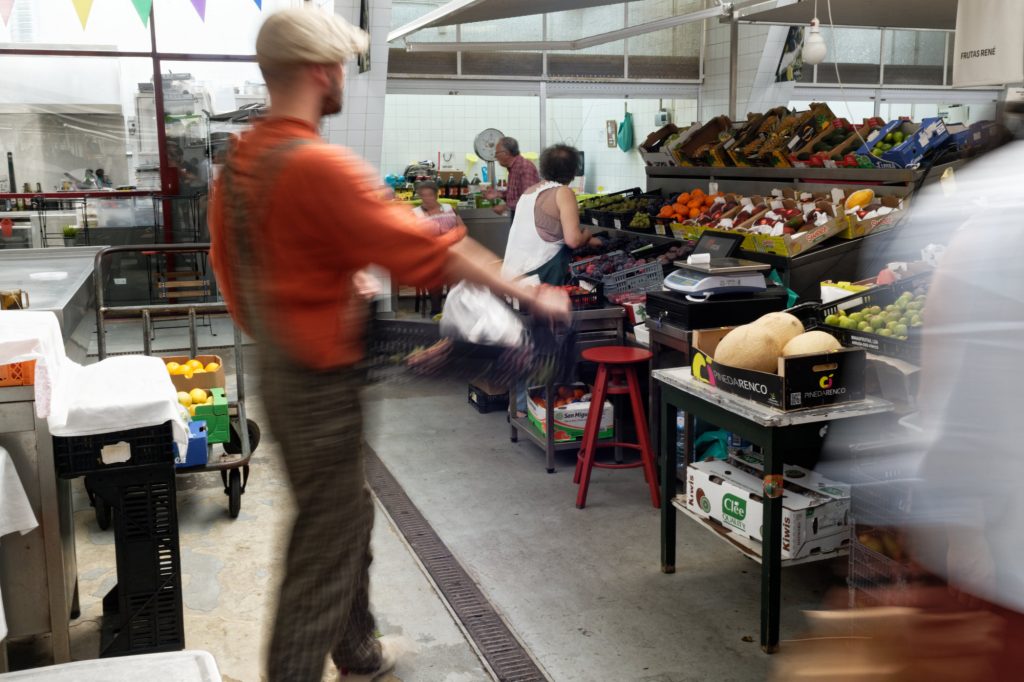If you are interested in our kimchi making process, click here to skip to the section about kimchi directly.
Do you ever stop to think about how you’re able to enjoy fresh strawberries, blueberries, and peaches in Winter? Contemporary food systems make an enormous variety of food available at any time of year. Produce travels long distances to be sold where it isn’t in season, undermining the business of small farms and emitting greenhouse gases. Local foods are riper at harvest because of shorter travel times, and choosing to buy local also supports the local economy. But even while shopping local, unseasonal food can be harmful to the environment; energy-intensive food production methods like greenhouses can produce 3-10 times the emissions as imported foods.[1]
Understanding why our food goes bad and what accelerates its decay helps reduce food waste, but fridges are only good at storing fresh produce for relatively short periods. There is a wide range of alternatives to fridge storage that keep fruits and vegetables from rotting for months or even years. This article will detail some long-term storage methods and their benefits depending on region and culinary purposes, and we will take you through our process of fermenting cabbage for kimchi.
When you decide to cut down the carbon emissions of your food, the produce available to you changes seasonally. The good news is that there are ways to store these foods for long periods so that you can still eat and cook with foods after their peak seasons. Alternatives to refrigerating food have existed throughout history, but the availability and convenience of the fridge has brought some of these practices out of the mainstream.
The two categories of traditional, low-tech food preservation are storing food in containers that control temperature and humidity, or preparing food to slow down its decay.
Storage Methods for Food Preservation
It is important to note that food storage differs in summer and winter because different variables cause food decay in each season. Traditional food storage containers address the needs of produce through passive strategies that make use of the climate.
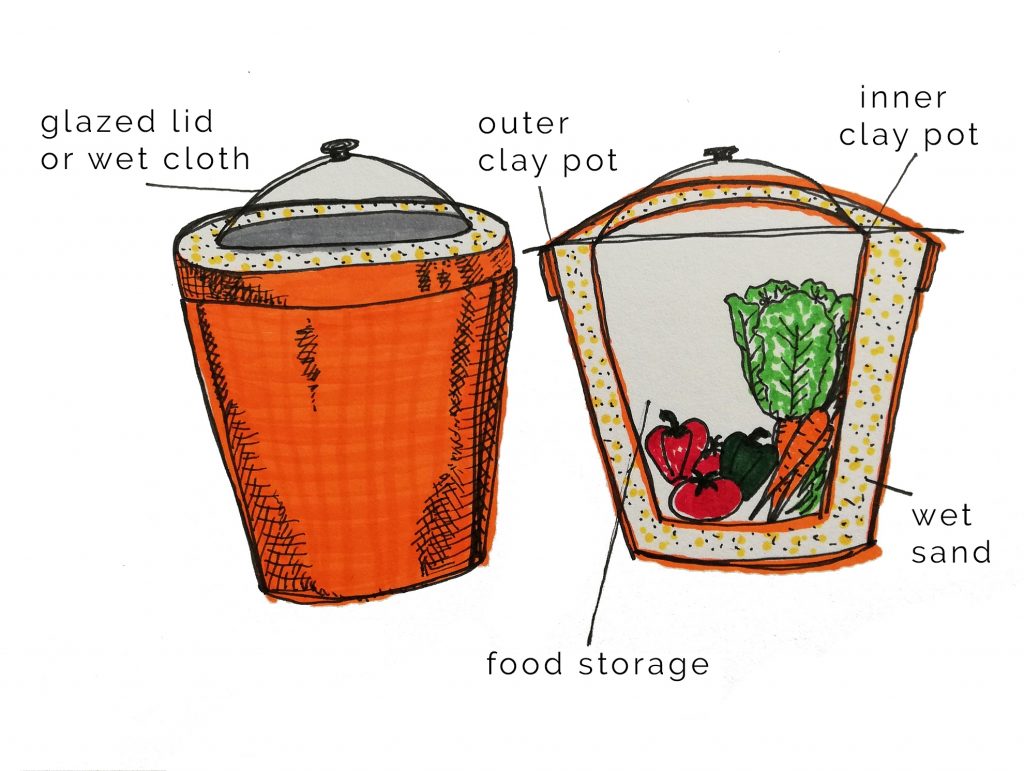
Zeer Pot
In hot and dry climates, natural fridges make use of evaporative cooling on the outer surface of a clay pot. In this method known as the Zeer Pot, water evaporation converts sensible heat to latent heat. This means that energy is released when liquid water is converted to vapor, reducing the temperature inside the container. The method uses two clay pots, one inside of the other. Between the pots is a layer of sand into which water is poured to begin the evaporative cooling process. Evaporation is continuous, ensuring that the natural fridge stays cool all day, but it relies on an outside temperature hot and dry enough to cause evaporation. Because the Zeer Pot serves the function of a fridge, it does not extend the life of food or preserve it any longer than a fridge, but it is necessary to mention when discussing how to store food without refrigerators or freezers.
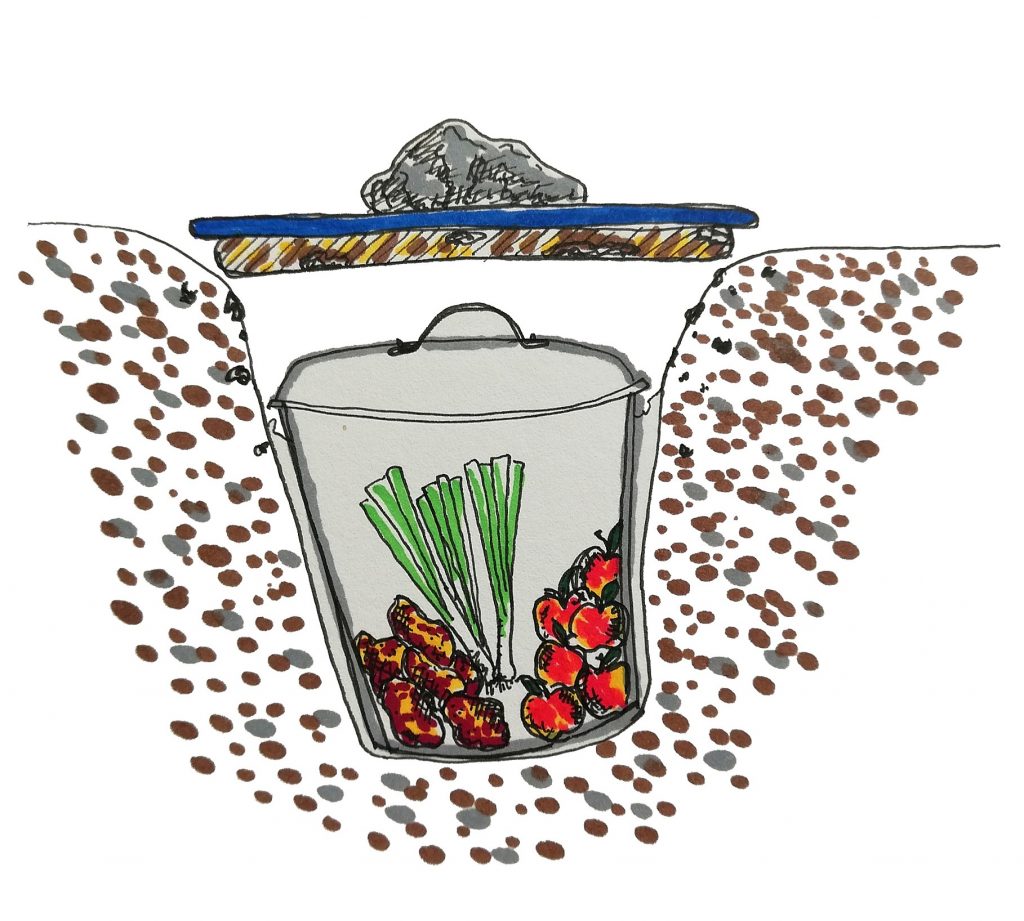
Root clamp using upcycled container
In cool climates and during the Winter months, some vegetables can stay fresh for longer by taking advantage of a steady temperature underground. Root vegetables can avoid frost by being buried, as ground temperatures fluctuate significantly less per day and can stay warmer than the winter air temperature.
Burying vegetables (and some fruits) can be done through covering the planted vegetables with soil or straw, or through harvesting the vegetables and putting them in small underground holes called clamps or silos.[2] Underground food cellars, when available, serve the same purpose. Given that a majority of the world population lives in urban areas, the first option is not as accessible, as it relies on growing your own food in large quantities. The last option, an underground root cellar, is useful for larger quantities of foods and can also be used to extend the shelf life of more than just fruits and vegetables.
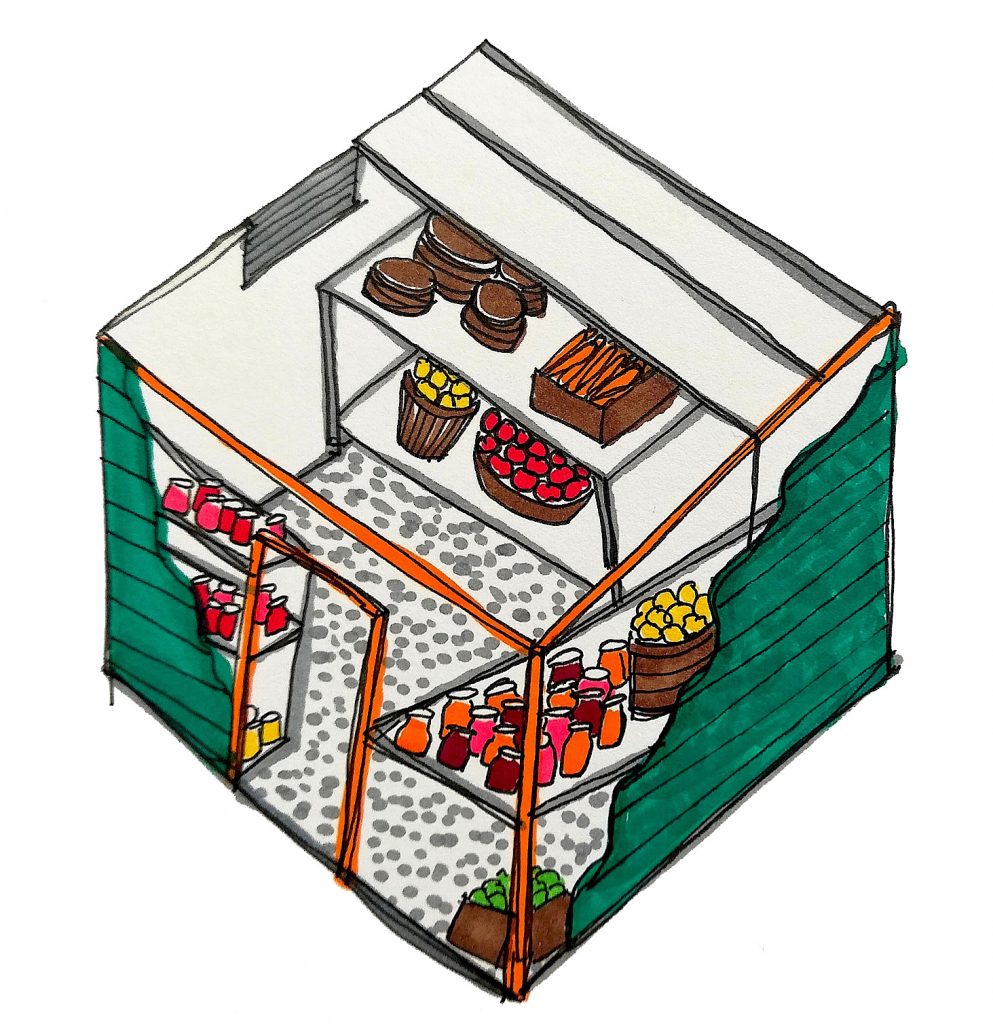
Root Cellar
The most accessible of the three ways of burying vegetables is the “clamp” or pits that are completely or partially buried. These can be built relatively quickly using very little garden space and can upcycle used household items (such as washers or steamers). Proper care must be taken to ventilate to avoid mold and to protect the food from rodents or other pests. For protection against rodents, the trench can be lined with rust-resistant metal mesh, which simultaneously aids ventilation. Another method to strengthen ventilation is to place a bundle of twigs in the center of the pit to act as an air shaft. The old drums of washing machines are perforated, which makes them perfect pest protection, but bricks can also be used for the walls and ground of the pit as well. To protect against rain, a plastic sheet can be used to cover the pit, although there may be a problem if the soil around the vegetables becomes extremely saturated from heavy rainfall.
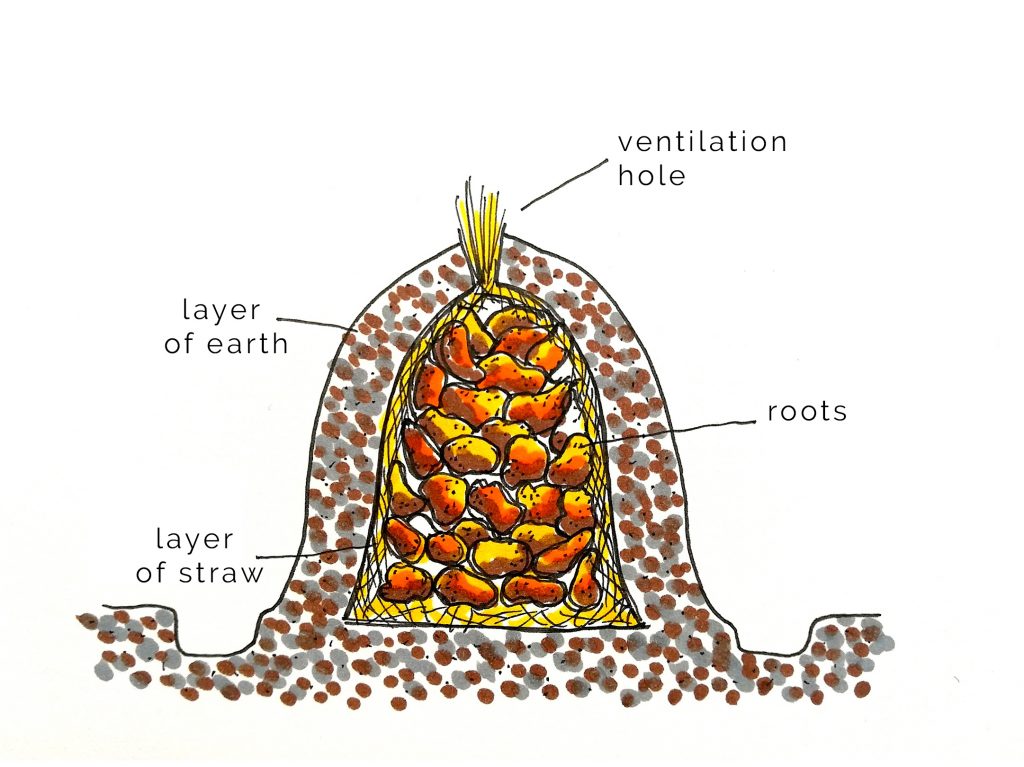
Root Clamp
Sand storage is helpful to use in tandem with other cold storage methods because it regulates moisture conditions. It can be done at multiple scales, so in large boxes in a root cellar, in a root clamp or food pit, or even at the bottom of your fridge drawer, and it works with all root vegetables, onions, leeks, shallots, and cauliflower.[3] Sand storage entails pouring sand into a container and then submerging the vegetables completely.[4] The sand serves the purpose of a humidity regulator, removing excess moisture, so vegetables cannot be washed before they are stored in this way.[5] Sand storage requires that there be space for ventilation between the vegetables being stored, and the sand container should stay out of heated rooms or areas that are below freezing.[6] If you do not have a food pit, cellar, or food clamp, you can use this method on its own if you have a cold enough garage or, as mentioned above, in the bottom of your fridge drawer.[7]
Preservation Through Food Preparation
Drying

Drying food using a dehydrator, an oven, and the sun
Drying is a method best used for fruit, mushrooms and herbs. It is more easily done during summer because there is more heat and more fruit available to dry, but in the winter, citrus and fungi can be dried in the oven which helps heat the house. Vegetables can also be dried, but they should be blanched, or boiled quickly, before drying, which removes some healthy enzymes.[8] Dried foods retain most of their vitamins, except vitamin C, which degrades quickly.
Foods can be dried in the sun, in an oven, or in a dehydrator, making sure to allow sufficient space for ventilation. The process of drying takes several hours, but it is very hands-off, as most of the work involved is preparing the food by slicing it and putting it on drying trays. When using the oven, care should be taken to set a low enough temperature to avoid burning. Dried fruit is a delicious snack and can be added to baked goods for its flavor and texture. Mushrooms and herbs are multipurpose when dried, and just like dried herbs, mushrooms can be ground to produce a delicious seasoning powder for any meal.
Fermenting
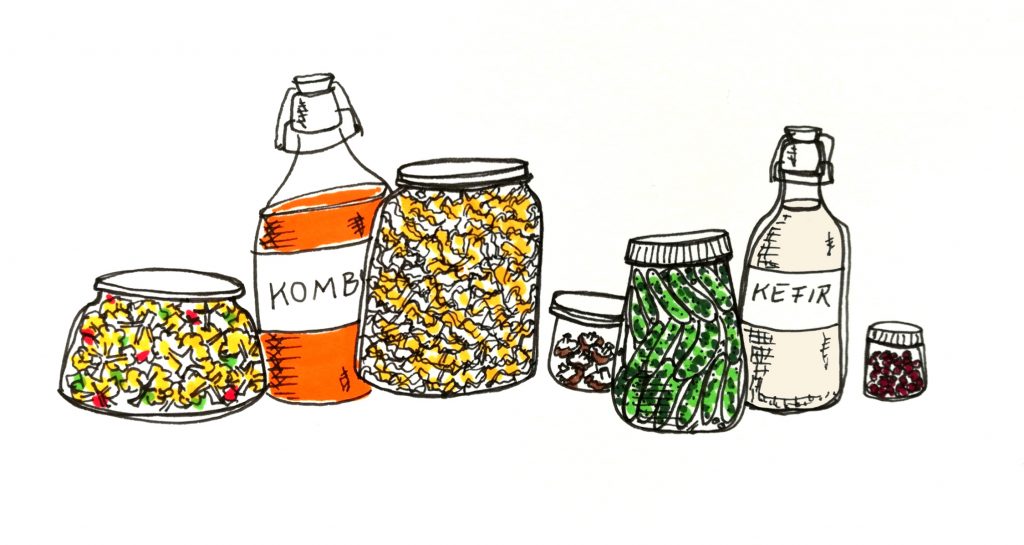
Fermented foods preserve well because the acidic environment blocks bacteria from multiplying. Lactic fermentation is the process in which lactic microbial organisms convert sugars into lactic acid, creating an acidic environment that inhibits bacterial growth.[9] It is best known for making sauerkraut and other cabbage dishes, like kimchi and Salvadorian curtido. Usually the process is to cut vegetables, season them, and leave them in their own juices to ferment for a few days or a few weeks. Then, jars are stored in a cool place—either in a cellar or fridge—and last a year or more. At room temperature, sauerkraut lasts up to a few months,[10] but kimchi will only last about a week if left out.[11] Lactic fermentation allows more raw vegetables to be eaten throughout the year without relying on food travelling long distances. When eaten uncooked, fermented foods preserve their enzyme and vitamin content while adding healthy probiotics.[12] Fermentation adds acidity and a distinct fermented flavor.[13]
Canning and Salting
Canning relies on heat to kill both bacteria and enzymes.[14] Canned food is prepared by placing food in sterilized jars, then boiling the closed jars of food for several minutes to stop factors that cause decay, so the food stays edible almost indefinitely.[15] Canning is an easy process that is helpful for storing foods that will be cooked anyway. However, if we relied on canning to preserve all our food, we would miss out on beneficial enzymes and vitamins.
Salting protects food from the multiplication of bacteria because salt draws the moisture out, creating an inhospitable environment.[16] Often, salted food is rinsed before it is used for cooking, which reduces the sodium but, unfortunately, removes some of the nutritional value from water-soluble vitamins.[17] To work around this disadvantage, salting is best used if the preserved food is intended to be cooked with a high amount of salt, such as in broth, or simply consumed in small quantities.[18]
Our Approach
Every method for storing food in the long-term has specific conditions for which it is ideal. At Critical Concrete, we implemented some of these strategies according to the conditions in Porto.
Local climate is a necessary component of food storage strategies. In the case of Zeer Pots, low humidity is essential to ensure evaporation. As Porto is relatively humid even in the summer, evaporative fridges are not appropriate for keeping food cool in this area. On the other hand, burying produce is optimal in a cool and dry climate.[19] It can even be effective in places that receive snow, as long as certain precautions are taken against moisture.[20] Food preparation for preservation often lasts six months or more. Fermented foods last longer when stored away from sunlight and direct heat, while dried foods need to be stored in a dry environment, such as in dry bags or jars.

Pouring water in the sand layer of our natural fridge to trigger evaporation
In the Summer of 2019 we attempted to build a natural fridge. However, the temperatures inside were not cold enough to store food; on the hottest day, the fridge was 17 degrees, and on cooler days the temperature inside was 13 at the lowest. This is quite logical given Porto’s humid climate, which resulted in less evaporation, and on the warmest day we recorded temperatures, it was only 21 degrees outside. Our unfortunate results emphasize the need for attention to specific climate in storage methods for food preservation.
Kimchi
To look into food preparation methods for long-term storage, we attempted lactic fermentation, using a recipe for vegan kimchi available on the blog Maangchi.com.
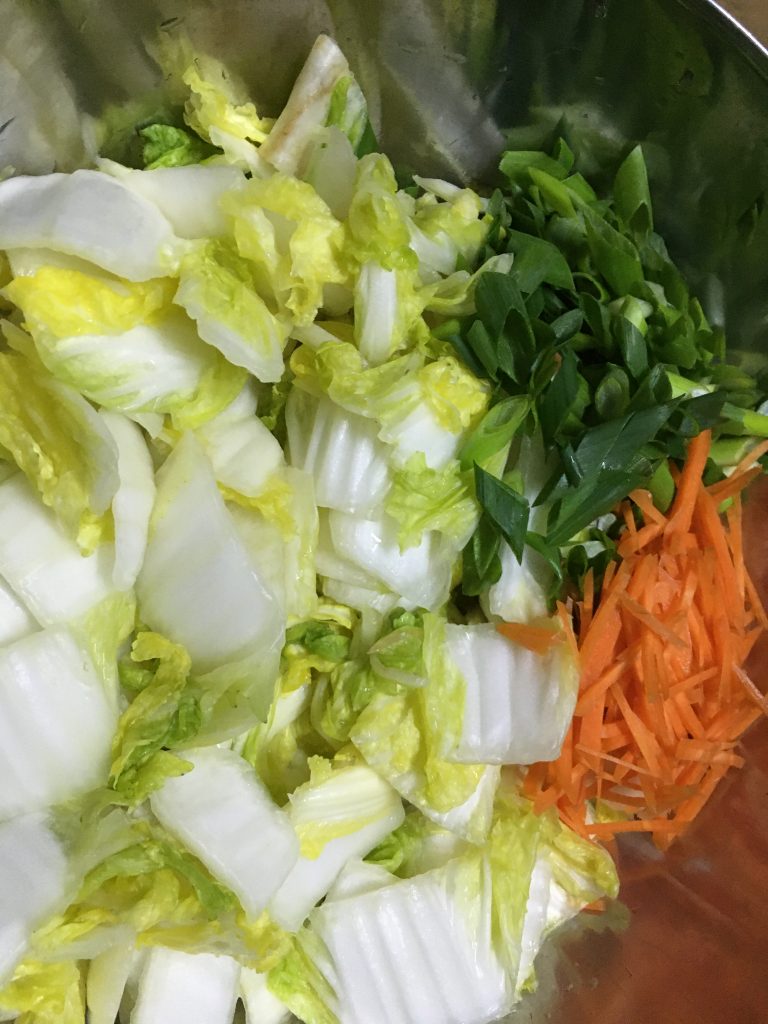
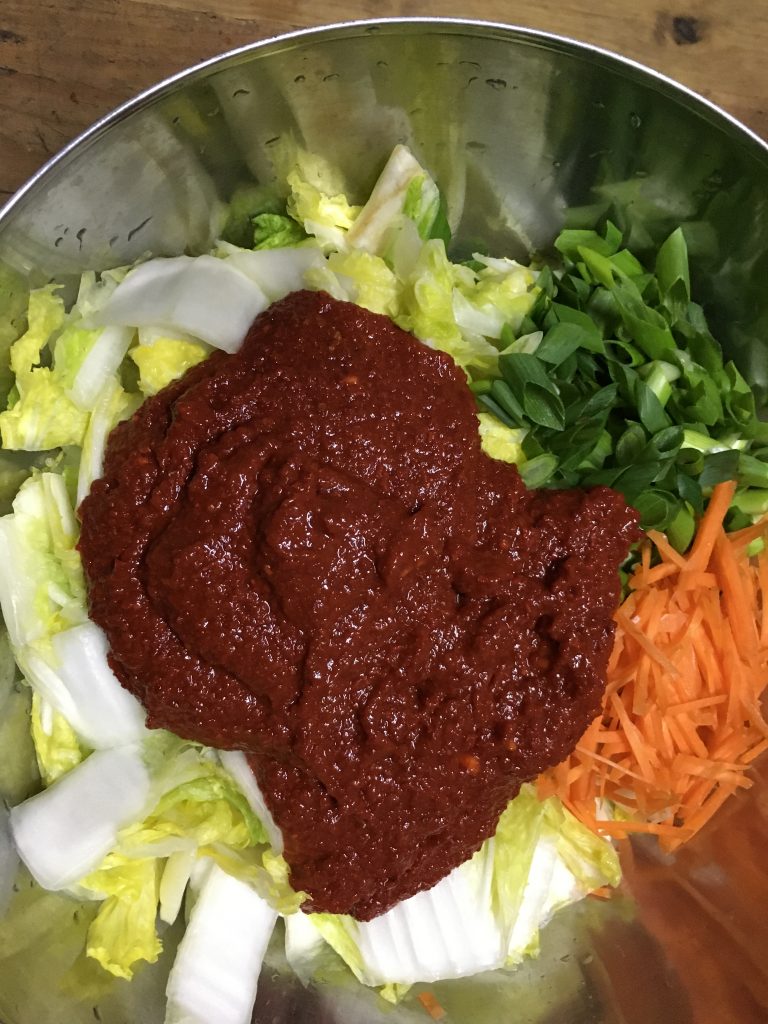
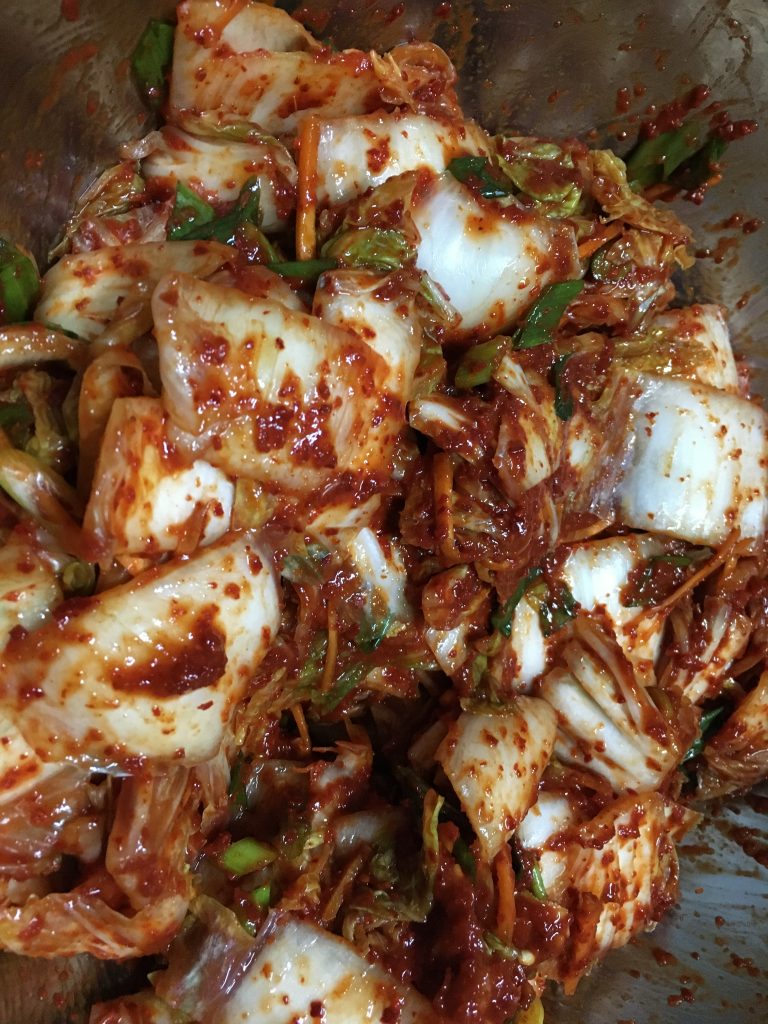
We compressed it into the jars to avoid air bubbles. After 5 days fermenting at room temperature, we placed the delicious kimchi in the fridge. (Normally, fermentation at room temperature only occurs for 1-2 days, but we stored it in a very cold unheated room.)


In these before and after images, we can see the evidence of fermentation: there are dozens of air bubbles where, prior to fermentation, we could only see a few. The difference in hue is only due to the artificial lighting used in the first image, however the cabbage is slightly more translucent after fermentation.
Our kimchi turned out wonderfully, but we noticed a few things in the process of making it. First is that it is not shelf stable, relying on the refrigerator to extend the lifetime past a week. (When we build a cool cellar in the Critical Concrete kitchen, the kimchi can be moved there to limit reliance on the fridge.) Secondly, when getting the cabbage ready to ferment, we noticed that the wider jar made it easier (than two other small jars we filled) to pack kimchi without allowing bubbles. Third of all, though slightly minor, is that when preparing kimchi, it is necessary to soak cabbage in brine and then rinse several times to remove the salt. This has the same caveat as preserving food with salt: losing water-soluble nutrients from rinsing. That being said, kimchi makes up for any lost nutrients in probiotics and flavor, and can last more than a year when stored correctly.

Conclusion
When used in the relatively humid summers of Porto, the Zeer Pot technique offered little relief from the hot outside temperatures. In drier climates, it could be a simple and low tech way to expand cold storage or, even better when possible, reduce the need for a fridge. During the winter, burying food is a great way to extend the life of vegetables, although, as mentioned, the reality of urban living makes it difficult to accomplish in many homes. If it is an option, there are many traditional ways to go about it, but each one needs to carefully protect against moisture, cold, and pests.
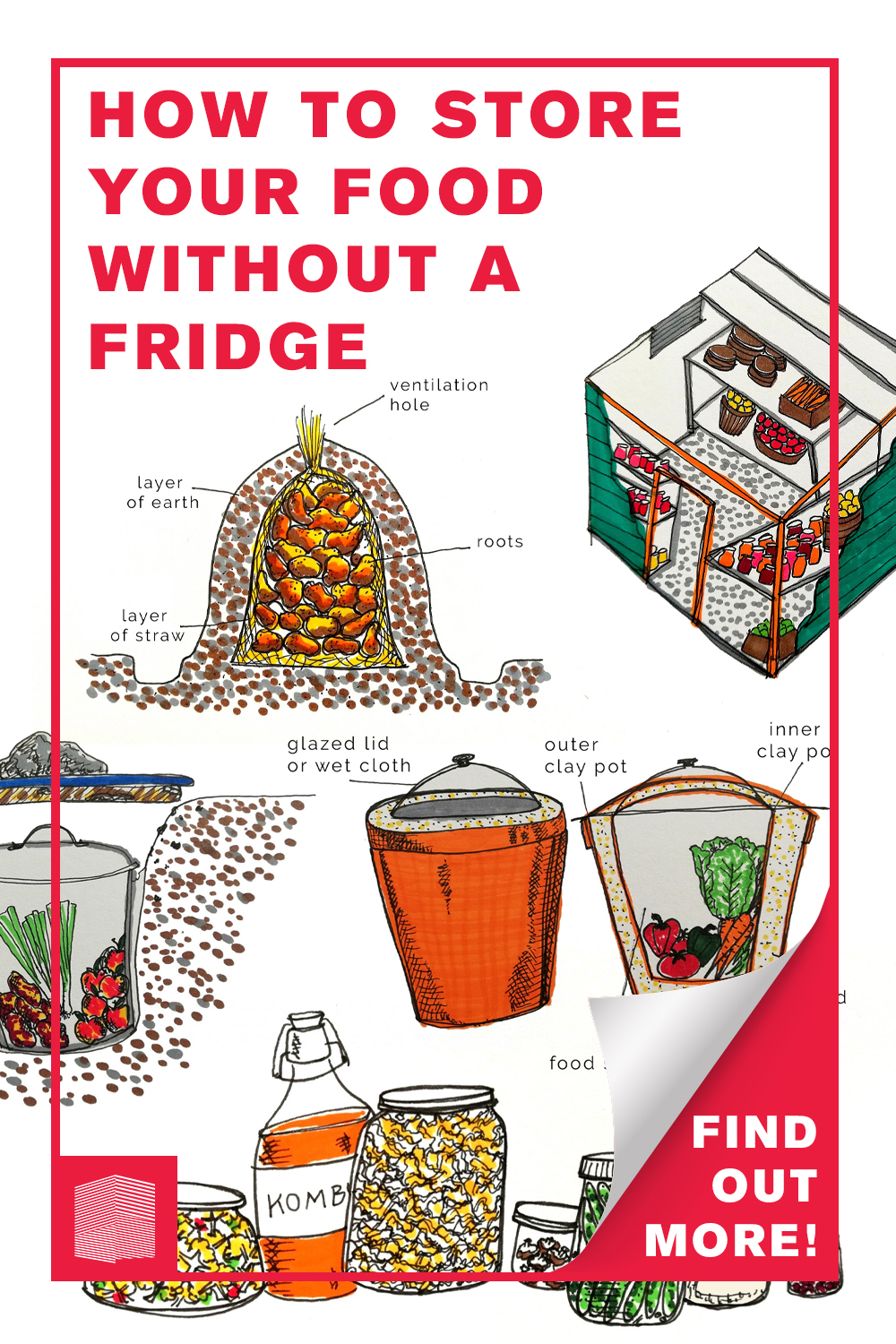
Salting and canning are two simple methods of food preservation that are perfect for certain dishes, but both affect the nutrient content of food significantly. Dried food offers a wide variety of purposes: in baked goods, as snacks, or as seasoning. As most homes have an oven, it is quite accessible. During the summer it is more energy efficient, but, on the other hand, can help heat your home in winter. The process of fermenting requires very little energy expenditure and can be used for a wide variety of produce, but it is especially suited for vegetables. In fact, as drying can be better for fruits and fungi, and fermenting is great for vegetables, these two methods of preservation complement each other. Although fermentation alters the flavor of raw foods, this can be a benefit. In the case of our homemade kimchi, fermentation was a success. However, it failed to reduce our reliance on the fridge, while still posing some of the problems of salt-preserved food.
Our food culture is built around having every variety of food available constantly, without inspiring consumers to consider where and how that food is produced. There are often significant challenges to eating local, seasonal food, and, at the same time, it won’t solve the world’s problems to only eat such food. However, eating seasonal food when possible leads to more delicious, nutritious meals and helps the environment simultaneously.
Stay tuned for our next food article in the series, on the use of food scraps.
Sources
[1] Ritchie, Hannah. “You Want to Reduce the Carbon Footprint of Your Food? Focus on What You Eat, Not Whether Your Food Is Local.” Our World in Data, Global Change Data Lab, 24 Jan. 2020, ourworldindata.org/food-choice-vs-eating-local.
[2] Preserving Food without Freezing or Canning: Traditional Techniques Using Salt, Oil, Sugar, Alcohol, Vinegar, Drying, Cold Storage, and Lactic Fermentation. Chelsea Green Pub., 2007.
[3] https://www.gardeningknowhow.com/edible/vegetables/vgen/storing-root-crops-in-sand.htm#:~:text=Root%20veggies%20that%20grow%20vertically,to%20entombing%20them%20in%20sand. accessed 18 February, 2021.
[4] https://www.gardeningknowhow.com/edible/vegetables/vgen/storing-root-crops-in-sand.htm#:~:text=Root%20veggies%20that%20grow%20vertically,to%20entombing%20them%20in%20sand. accessed 18 February, 2021.
[5] https://www.gardeningknowhow.com/edible/vegetables/vgen/storing-root-crops-in-sand.htm#:~:text=Root%20veggies%20that%20grow%20vertically,to%20entombing%20them%20in%20sand. accessed 18 February, 2021.
[6] https://www.gardeningknowhow.com/edible/vegetables/vgen/storing-root-crops-in-sand.htm#:~:text=Root%20veggies%20that%20grow%20vertically,to%20entombing%20them%20in%20sand. accessed 18 February, 2021.
[7] https://www.gardeningknowhow.com/edible/vegetables/vgen/storing-root-crops-in-sand.htm#:~:text=Root%20veggies%20that%20grow%20vertically,to%20entombing%20them%20in%20sand. accessed 18 February, 2021.
[8] Preserving Food without Freezing or Canning: Traditional Techniques Using Salt, Oil, Sugar, Alcohol, Vinegar, Drying, Cold Storage, and Lactic Fermentation. Chelsea Green Pub., 2007.
[9] Preserving Food without Freezing or Canning: Traditional Techniques Using Salt, Oil, Sugar, Alcohol, Vinegar, Drying, Cold Storage, and Lactic Fermentation. Chelsea Green Pub., 2007.
[10] https://growyourpantry.com/blogs/fermenting-pickling-preserving/how-long-does-sauerkraut-last, accessed 18/01/21.
[11] https://www.healthline.com/nutrition/does-kimchi-go-bad#shelf-life, accessed 18/01/21.
[12]Preserving Food without Freezing or Canning: Traditional Techniques Using Salt, Oil, Sugar, Alcohol, Vinegar, Drying, Cold Storage, and Lactic Fermentation. Chelsea Green Pub., 2007.
[13] Preserving Food without Freezing or Canning: Traditional Techniques Using Salt, Oil, Sugar, Alcohol, Vinegar, Drying, Cold Storage, and Lactic Fermentation. Chelsea Green Pub., 2007.
[14] Seymour, John. The Self-Sufficient Gardener: A Complete Guide to Growing and Preserving All Your Own Food. Dolphin, 1980.
[15] Seymour, John. The Self-Sufficient Gardener: A Complete Guide to Growing and Preserving All Your Own Food. Dolphin, 1980.
[16] Preserving Food without Freezing or Canning: Traditional Techniques Using Salt, Oil, Sugar, Alcohol, Vinegar, Drying, Cold Storage, and Lactic Fermentation. Chelsea Green Pub., 2007.
[17] Preserving Food without Freezing or Canning: Traditional Techniques Using Salt, Oil, Sugar, Alcohol, Vinegar, Drying, Cold Storage, and Lactic Fermentation. Chelsea Green Pub., 2007.
[18] Preserving Food without Freezing or Canning: Traditional Techniques Using Salt, Oil, Sugar, Alcohol, Vinegar, Drying, Cold Storage, and Lactic Fermentation. Chelsea Green Pub., 2007.
[19] Preserving Food without Freezing or Canning: Traditional Techniques Using Salt, Oil, Sugar, Alcohol, Vinegar, Drying, Cold Storage, and Lactic Fermentation. Chelsea Green Pub., 2007.
[20] Preserving Food without Freezing or Canning: Traditional Techniques Using Salt, Oil, Sugar, Alcohol, Vinegar, Drying, Cold Storage, and Lactic Fermentation. Chelsea Green Pub., 2007.
The post Knowing our Food: Preservation first appeared on Critical Concrete.
